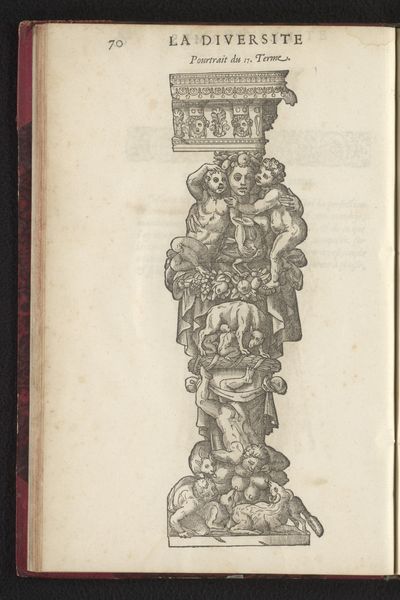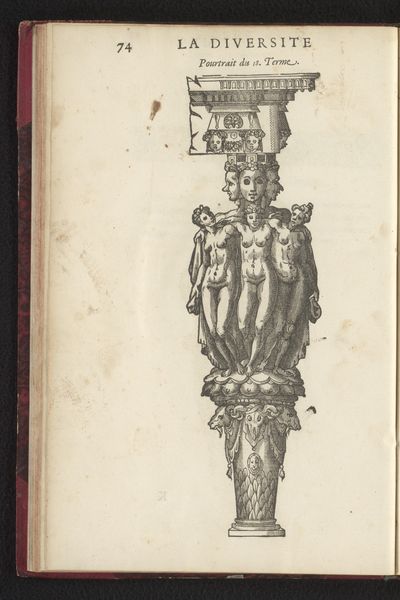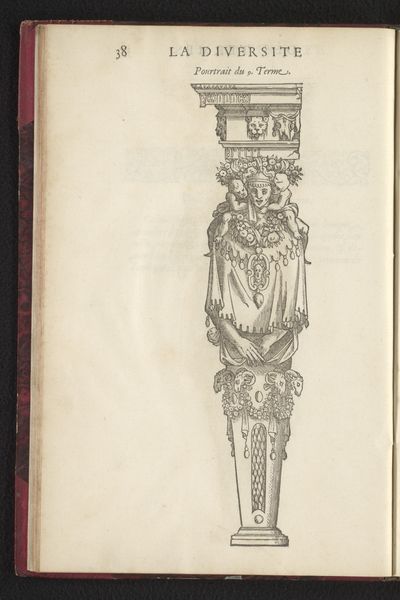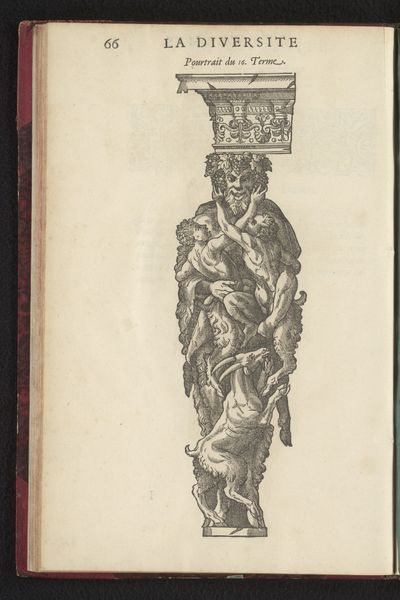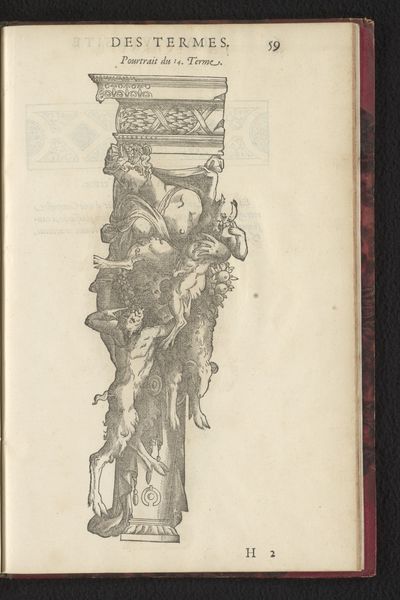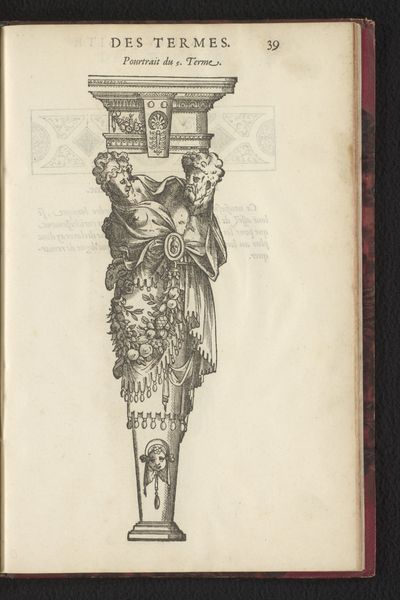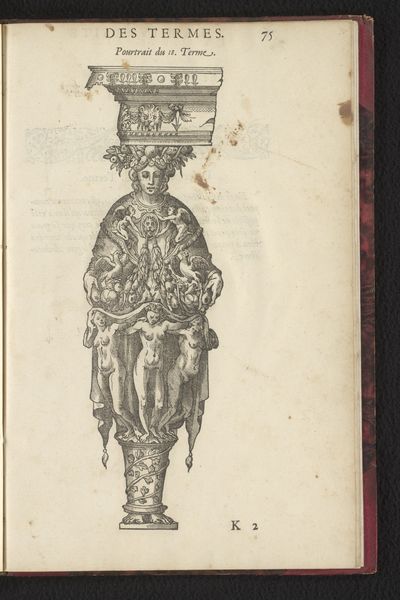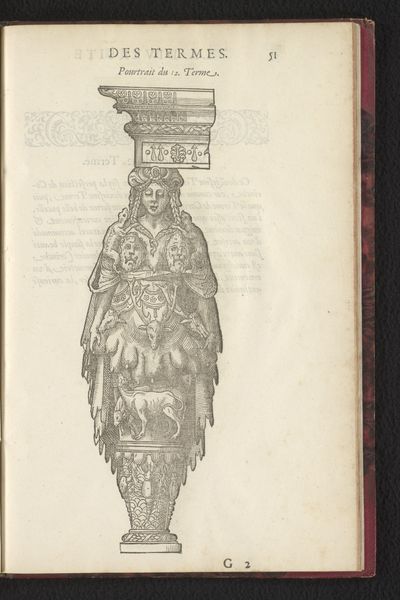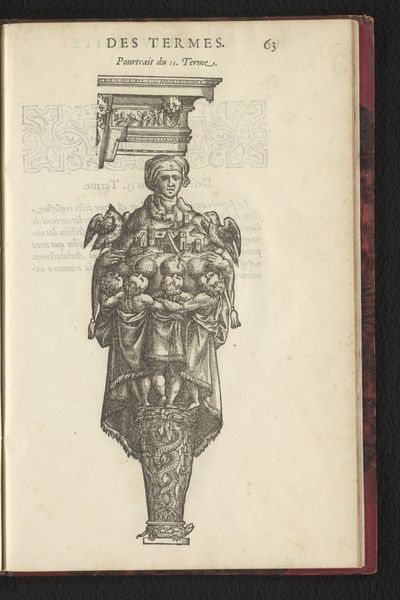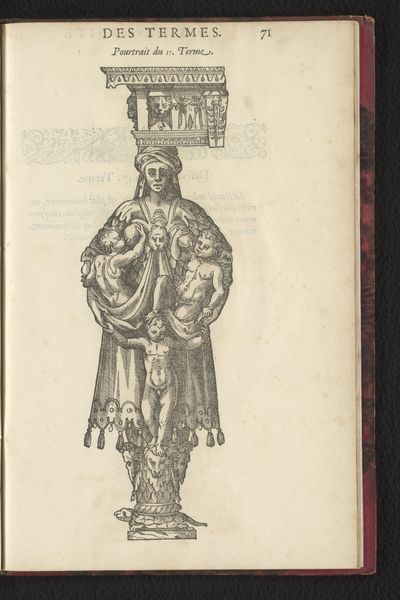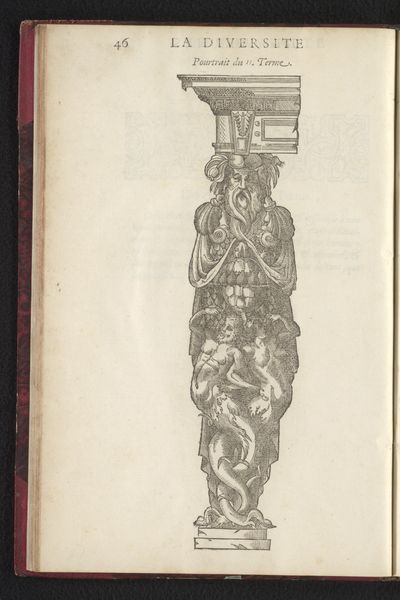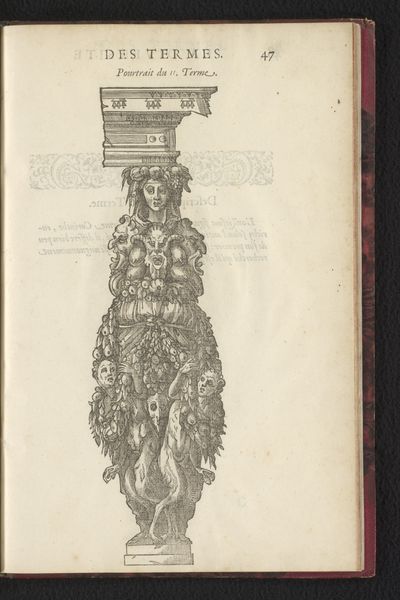
drawing, print, engraving
#
drawing
#
pen drawing
#
mechanical pen drawing
# print
#
pen sketch
#
sketch book
#
mannerism
#
figuration
#
personal sketchbook
#
pen-ink sketch
#
pen and pencil
#
pen work
#
sketchbook drawing
#
sketchbook art
#
engraving
Dimensions: height 308 mm, width 201 mm
Copyright: Rijks Museum: Open Domain
Curator: Take a look at this page from a book titled "La Diversité" featuring a "Term in de vorm van een mannelijke sater," created around 1572. It is rendered through print and engraving. Editor: Immediately, the swirling figures suggest a sense of frenetic energy. A strange, chaotic beauty in its swirling forms... are those satyrs? Curator: Precisely! Notice how the artist employed engraving to articulate texture. The use of line suggests an interest in form and detail, hallmarks of Mannerism. This era, obsessed with refinement, would produce pieces concerned with virtuosity. Editor: Yes, it evokes classical forms but amplifies them to the point of exaggeration. I see symbols of debauchery in the satyr, an abandonment of control. This visual representation pulls from established tropes and yet transforms into something new, perhaps reflecting shifting cultural attitudes toward those symbols at the time. Curator: These printed images also became widespread with the advent of reproducible processes. Printmaking at the time involved immense material processes, each phase employing workshops, assistants, and specialists—the division of labor created these intricate designs to circulate ideas. Editor: You’re right, knowing it’s a print influences my perspective. The image’s symbolic power increases through wider dissemination. Were these images intended to provoke conversation or act as emblems for broader ideas about nature and humanity? Curator: Likely both, though understanding their specific place within the broader discourse of the late 16th century remains crucial. It invites further examination of both workshops of this time and the place that the image occupies culturally and symbolically. Editor: I appreciate learning more about the context in which these images were produced. It adds another dimension to how we understand the symbols depicted here.
Comments
No comments
Be the first to comment and join the conversation on the ultimate creative platform.

